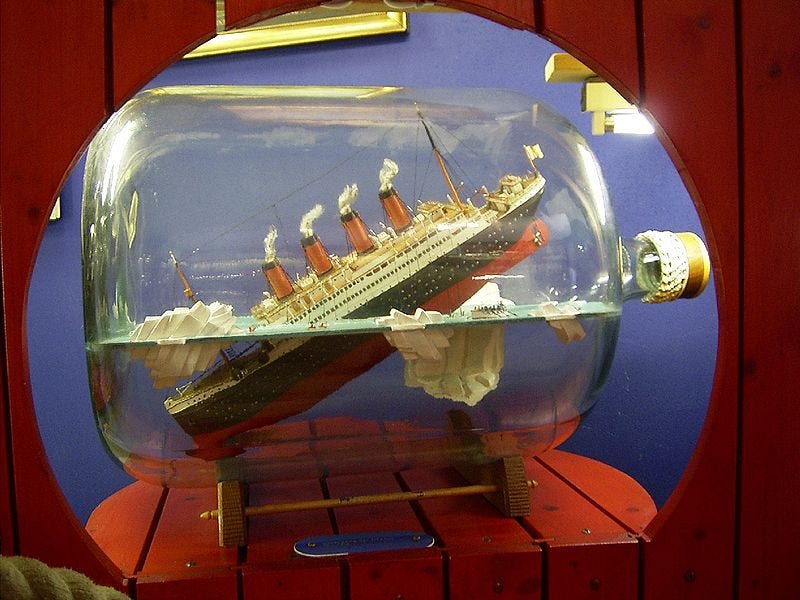The Twin Elephants on the Foredeck (Part 1)
The new ABC reports are out for the first half of 2010 and we’re deluged with stories that try to put a thoughtful, pensive and sober face on all of the numbers.
What do they mean? What do they mean for the new print vs. digital paradigm? Where is this all going? At what point do we say to that cute little paper and ink baby, “You know, we're tossing you out with the bathwater. Deal with it.”
You can’t argue with the numbers:
Total paid circulation is down 2.27% as compared to the first six months of 2009. No one would call 2009 a banner year for any business.
Total single copy sales were down 5.63%. Keep in mind that in the first half of 2009 Anderson News shut their doors, Source Interlink ran into a wall, and News Group and to a lesser extant, Source and Hudson News were scrambling to pick up the pieces left behind from Anco’s tantrum.
On the subscription side, sales were down 1.96%

paidContent.org reported on the results this way: “ABC Fas-Fax: Consumer Mag Circ Sill Falling, Just Not As Badly.” That’s not exactly what I call a hearty endorsement of your industry.
So what’s up? How can you follow up a real stinker of a year with another rotten egg? In an interview with Media Life Magazine, consultant John Hanrahan points out some things that everyone should already be aware of: the poor economy, changes in buying habits, and the availability of free information on the web.
Writing in Audience Development, former Ziff Davis Circulation Director Baird Davis somberly advised publishers who have copies on the mainline that they should find “more distribution alternatives because major wholesalers are more likely to be focused on their hit driven checkout titles.”
Yet check out title sales are down and some of the “hit” driven celebrity check out titles such as “Oprah” and “Every Day with Rachel Ray” are down.
So, um, those 9,000 copies per issue that I sell at a major national discount chain are going to be replaced, um, where exactly?
Where do we go from here?
Several things first of all. I don’t think the shift to “digital” is what’s hurting the sales of print magazines at the newsstand. Yet.
Firstly, ABC audits a few hundred titles. We have as many as 5000 titles on the newsstand.
I’d also point out that 75% of my clients (most of whom are not ABC audited) experienced single copy sales increases in the first half of 2010. This doesn't mean that I'm denying what's happening in the world I work in, I just look at it from a very different angle.
And from my angle, I want to start the conversation by talking about the twin elephants in the room that no one wants to talk about: We do a lousy job of merchandising and marketing our magazines for sale at the newsstand.
On the marketing side of the aisle we have to face the fact that we produce millions of copies of our products for sale. That costs money. We invest hundreds of millions of dollars in packing and shipping our products all over North America and world,. We pay our merchandising companies even more money to place them on expensive displays that we often pay hundreds of thousands of dollars for to get the premium placement on those displays.
And then we hope and pray that someone will walk by and be willing to pay full price for our magazines because this is an “impulse” business.
We hem and haw when our retail trading partners ask us to join in something as simple as a coupon campaign.
Do you recall the last time you heard a radio ad encouraging you to buy a magazine? How about TV? Or let’s go all 21st century and think an internet ad? An E-blast? Something on Facebook? Twitter? Do some of our magazine marketing gurus even know about foursquare?
We rarely use social media to create campaigns to get people into stores to buy our magazines. That’s behavior we need to stop now.
Let’s take a look at the merchandising elephant. We abused our retail trading partners in the ‘80’s and ‘90’s to a point where they finally destroyed what was a pretty decent way to move product to market. Don't knock local knowledge.
We now have about 90% of US distribution in the hands of three major companies. That’s not a bad thing. I don't want to go back to the "good old days." These partners we now have work hard and do the best they can. And they are good people to work with who want to do the right thing. But we can’t expect companies that are sprawled out throughout the country, working hundreds of miles from their central warehouses, handling thousands of products to get it all right. We can’t expect their stretched to the limit staff to really know and understand the products that they are handling when our own staffs are stretched to the limit.
We should face the fact that we took a combative and suspicious industry where the four links in the distribution chain often work at cross purposes and made it even more combative and suspicious.
This is not exactly what I would call a recipe for success.
More on this later this week.


